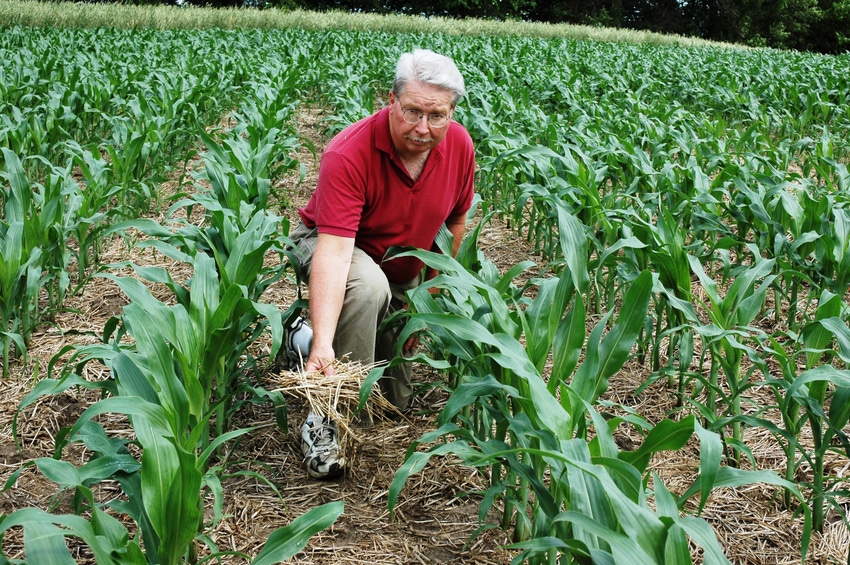December 12, 2016

THINK Different
It’s sometimes hard to cost-justify conservation, Ed Ulch says, but he likes the challenge. He hasn’t hesitated to undertake new practices like no-till and cover crops and then make adjustments because conserving and enhancing natural resources is the right thing to do.
“There’s a happy medium between short term profits and accomplishing what we want to do long term on our farm,” he says. What the award-winning conservationist/farmer from eastern Iowa has seen over time, though, is that he’s been able to accomplish natural resources goals on a profitable farm.
------------
Of all the conservation and water quality improvement practices Ed Ulch uses on his farm—and there are many—he scratched his head the most with no-till. That early struggle more than 40 years ago demonstrates the 2011 American Soybean Association Conservation Legacy Award (CLA) winner’s approach and tenacity towards constantly improving his farm. He’s never been afraid to try a new conservation practice, and when he does, he makes it work.
“We didn’t have good no-till equipment back then, and we got reduced yields at first.” That caused some doubt and led to a limited amount of no-till ground initially. “The yields started to improve, though,” he says, and now he and his son Brian farm a little more than 2,000 acres of corn and soybeans with no-till. Planters are much better equipped for no-till now, even in standing cover crops.
Cover crop expansion
When Ulch was named the national CLA winner five years ago, he and his son were using cover crops on 40 acres. Now, all their corn and soybean acres are in cover crops. They’ve been experimenting with cover crops for 14 years, trying different combinations of grasses, brassicas and legumes. “We’ve used cereal rye, annual ryegrass, oats, triticale, cowpeas, radishes, sudan grass, rapeseed and turnips,” he says. “We still haven’t settled, but we’re using mostly cereal rye with sometimes rapeseed and turnips. Our most dependable seems to be cereal rye.”
When he started cover crops, Ulch used a grain drill. “But that was time consuming. We tried aerial seeding but our stands weren’t that good. So now we broadcast cover crop seed,” Ulch says. “We use our fertilizer spreader, and we sometimes put cover crops on with potash. If it’s dry we incorporate the seed. We try to broadcast before a rain—if we can do it right before a rain it can be just as effective as when it’s incorporated.”
Ulch says their biggest problem with cover crops is managing armyworms. Some farmers are worried about termination of cover crops, but that hasn’t been a problem for Ulch. “If it’s dry, we might terminate earlier, because cover crops can draw moisture. But last year the cereal rye was really tall and we planted late. That noticeably kept weeds down. The planter went through it fine—we planted green and the soybeans turned out great.”
Ulch says there’s a lot yet to learn about soil health. “We’re hoping to increase organic matter by one percent in five years with no-till and cover crops, with better soil structure, and better water and nutrient holding capacity. I think our soils are more productive than they used to be.”
Watching water quality
With Lake McBride, Iowa�’s largest state park and a popular lake with swimming, boating and fishing activity only two miles from his farm, Ulch is extra cautious about the water that leaves his farm. “Soil conservation and water quality go hand in hand,” Ulch says.
He uses N stabilizer, sidedresses most nitrogen, continues to build a terrace or two every year, and recently graded most streambanks and planted poplar trees and grass on the slopes. It’s a new practice that offers no cost-share, but that doesn’t stop Ulch from using it.
“It’s the challenge of it,” Ulch says when asked why he keeps adding conservation practices, trying new ones and making adjustments. “It’s the right thing to do.”
About the Author(s)
You May Also Like




